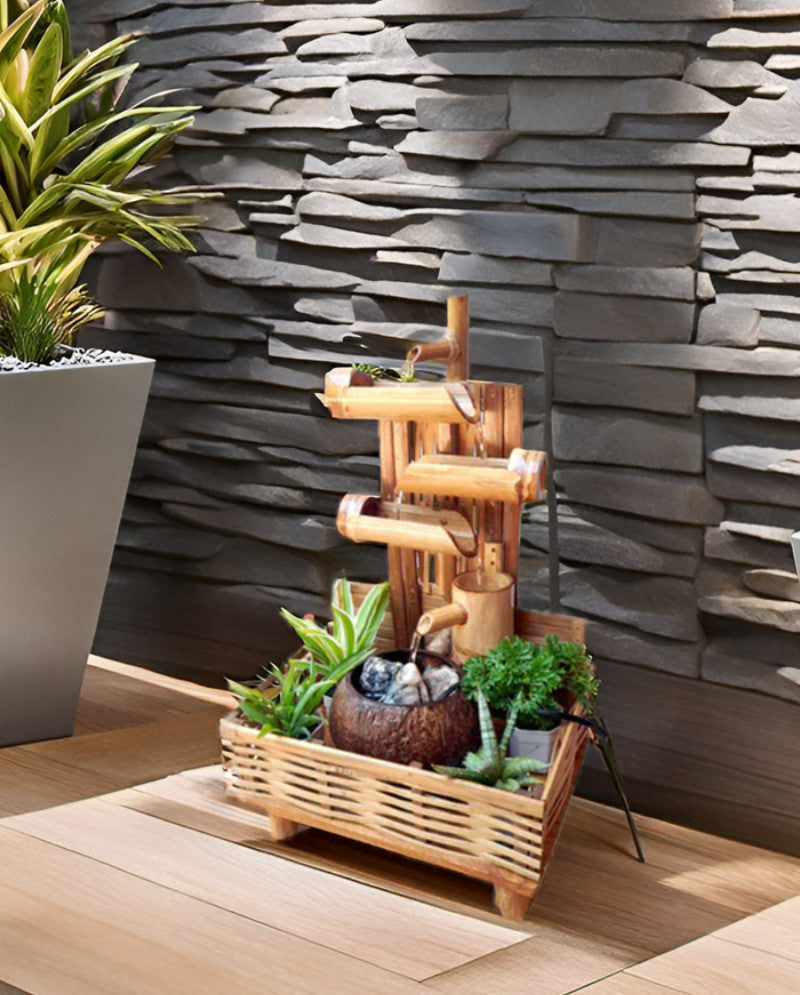
9 Best Summer Vegetables to Grow in Your Garden
As the winters are gone and the summer season has arrived, it's high time to switch your diet too. Since summers bring various health issues like dehydration, vitamin deficiencies, and skin allergies with them, so the consumption of seasonal vegetables can...
It not only keeps health troubles at bay but also makes your body feel its best throughout the hottest season. So, you need not to just rely on refreshing icy drinks any more!
Here are some of the vitamin-loaded summer vegetables that you should definitely grow to make the most of this season:
Brinjal
With an outstanding fibre content along with several phytonutrients, brinjals are known to play a major role in antioxidant activity. While choosing brinjals, you should always prefer those with smooth and tight skin, which feel heavy for their size. Also, the brinjals with mushy spots or wrinkled bits must be avoided. Loaded with an impressive array of minerals and vitamins, this vegetable comes in different colours ranging from purple and black to a near-translucent white.
How to Grow Brinjal At Home:
- Prepare the soil with well-aged manure.
- Sow brinjal seeds about 10 mm deep in well-prepared beds that are 24 to 30 inches apart.
- Water it regularly as per requirement.
- Transfer the young plants into larger pots that are 12 inches deep with a capacity of at least 4 to 5 litres.
- Thrust a stick in the pot and tie your plant to it for better support.
Cucumber
With the ability to regulate body temperature, cucumber has a high water content (96%) which makes it a hydrating and refreshing solution in summers. Being a member of the squash family, it effectively flushes out toxins from the digestive system and helps in improving digestion. Also, cucumber is a great source of magnesium, potassium, and fibre which regulates blood pressure. If you want to dissolve kidney or bladder stones, then cucumber is the perfect option for you!
How to Grow Cucumber At Home:
- Make sure that the soil is moist and well-drained, not waterlogged.
- Before planting cucumber seeds, add organic matter up to a depth of 2 inches for improving the clay soil.
- Sow seeds in rows that are 1 inch deep and 6 to 10 inches apart.
- Water it immediately and then water as per requirement.
- If you are transplanting seedlings, plant them 12 inches apart. A trellis might be a safe idea if you want the vine to climb, or if you have limited space.
Bottle Gourd
By creating a cooling effect, Bottle gourd or lauki is known to restore the functioning of the system. Due to its high water content, this calming vegetable fights acidity and facilitates digestion. Also, its moisture content quenches thirst easily, which keeps the body refreshed throughout summers. Consumption of bottle gourd juice along with a tsp of lemon juice is a great diuretic, i.e. it leads to increased production of urine which further detoxifies the body.
How to Grow Bottle Gourd At Home:
- Start sowing the bottle gourd seeds in the summer season. Soak the seeds in water overnight to speed up germination.
- The seeds should be spaced about 24 inches apart after germination, so the plants have room to grow.
- For potting, choose 12-inch deep pots and sturdy trellis. Add a rope to support the young plant.
- Make sure the bottle gourd plants are going to be stable as the fruit can be heavy on the vines.
- The plant should receive 8 hours of sunlight per day to thrive.
White Onions
With a miraculous anti-ageing effect on our body, white onions are known to improve body strength and stability. Regular consumption of white onions not only enhances digestive strength but cures bleeding disorders such as nasal bleeding and bleeding piles also. It relaxes your mind and helps you to keep calm even in the scorching heat.
How to Grow White Onions At Home:
- Plant white onion seeds in average soil that is mixed with aged compost.
- Place them in full sun for better germination.
- Sow thinly in rows that are 1- 2 feet apart and cover them with a ¼ inch of fine soil.
-
Water lightly to keep the soil evenly moist.
Pumpkin
Pumpkin, a widely grown backyard vegetable is a summer delight both for your health and taste-buds. Incredibly rich in antioxidants and vitamins, Pumpkin is low in calories and packed with Vitamin A and flavonoid polyphenolic antioxidants (such as lutein, xanthin, and carotenes)
A fast-growing vine, Pumpkin grows in a similar fashion like that of other Cucurbitaceae families (cucumber, squash, cantaloupes, etc.)
How to grow Pumpkin at Home:
- Sow seeds directly in the soil. Pumpkins are very sensitive to cold. Make sure the temperature is ideal for sowing.
- Plant seeds in rows or “pumpkin hills” which are the size of small pitcher mounds. With hills, the land will warm more quickly and the seeds will sprout quickly. (This also helps with drainage and pest control.)
- Prepare the hills in advance with old manure dug deep into the soil (12 to 15 inches).
- Plant the seeds 1 inch deep (4 to 5 seeds per mound). Space mounds 4 to 8 feet apart.
- Your plants should develop in less than a week and sprout within 5 to 10 days. When the plants are 2 to 3 inches tall, thin to 2 to 3 plants per hill by snipping off unwanted plants.
Spinach:
One of the most common and healthy greens, Spinach is a superfood loaded with tons of nutrients in a low-calorie package. Spinach helps improve skin, hair and bone health. An essential for diabetes management, spinach contains an antioxidant known as alpha-lipoic acid, which has been shown to lower glucose levels. Spinach is also an excellent source of beta-carotene which is shown to lower the risk of developing asthma.
How to grow Spinach at Home:
- Plant in mid-August for a fall crop, ensuring that soil temperature is on the lower side for that month.
- Add aged manure to the soil about a week before planting
- Although seedlings can be propagated indoors, it is not recommended as seedlings are hard to transfer.
- Sow seeds ½ to 1 inch deep, cover lightly with dirt. Sow about 12 seeds per ft of the row, or sprinkle over a wide row or layer.
Okra:
A flowering plant, Okra is, in many parts of the country, known as ladies’ fingers or bhindi. This vegetable pod boasts rich content of vitamins and minerals, including vitamins A, B, C, E, and K, as well as calcium, iron, magnesium, potassium, and zinc. Owing to this, Okra consumption boosts immunity, improves digestion and vision. It also promotes skin health as the presence of Vitamin A oxidants helps with quicker healing, reducing the appearance of scars and acne, and eliminating wrinkles.
How to grow Okra at Home:
- You can sow okra directly in your garden 3 to 4 weeks before springs start.
- Plant okra about ½ to 1 inch deep and 12 to 18 inches asunder.
- You can soak the seeds overnight in tepid water to help speed up germination.
- Be sure to space them 1 to 2 feet apart to give them ample room to grow. These plants are tall, thus, be sure to space out the rows 3 to 4 feet apart.
CowPeas (Lobia):
Cowpeas, also known as Lobia, is a type of bean with little oval structure and a black eye on it. What makes cowpeas a summer hero is that they contain almost all essential vitamins and minerals including vitamin A, B1, B2, B3, B5, B6, C, folic acid, iron, potassium, magnesium, calcium, selenium, sodium, zinc, copper, phosphorus, etc.
It goes without saying that they have a number of health benefits. A few among them could be:
- Improved Blood Cholesterol
- The omission of Free Radicals
- Good for Weight Loss
- Delays Signs of Aging
How to grow Cowpeas at Home:
- Start with a fresh garden bed, nicely weeded with the soil loosened, and ready for sowing.
- Plant the seeds straight into the dirt, approximately 1 inch deep and 4-6 inches apart in rows.
- Water thoroughly, then wait a few days for the seeds to sprout.
- Once the plant grows, it’ll start forming flower buds. From these, the cowpeas will sprout.
Green Chillies:
Green Chillies has enjoyed a divided audience always. While some enjoying eating them raw, some will carefully pick out chillies from their food. If you belong to the latter category, here is a list of health benefits that might make you reconsider green chillies forever!
- Green chillies are widely known to aid weight loss. Consumption of green chillies improves metabolism and help your body burn calories faster.
- Green Chillies are known to treat stomach illnesses. They are loaded with dietary fibres which help in cleansing your colons and keeping your bowel movements healthy.
- The presence of Vitamin C means that green chillies are high in antioxidants. This improves eye health by reducing the risk of eye disorders like cataracts and helps improve vision.
How to Grow Green Chillies at home:
- Sow hot chilli seeds a ½ inch deep and 18 to 24 inches asunder.
- Space rows 24 to 36 inches apart.
- Sow two seeds in each pot and lightly for the most successful seedling.
- Chillies can be transplanted when 4 to 6 inches tall.
By adding these nutrient-rich summer vegetables to your diet, you can keep your body refreshed and hydrated this summer. So, what are you waiting for? Start sowing and growing your own vegetables to experience the freshness of taste and nutrition at home, without any risk of the pesticides. For more details on this, click here.

